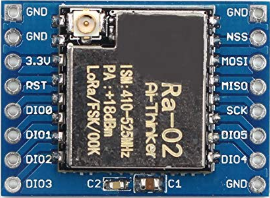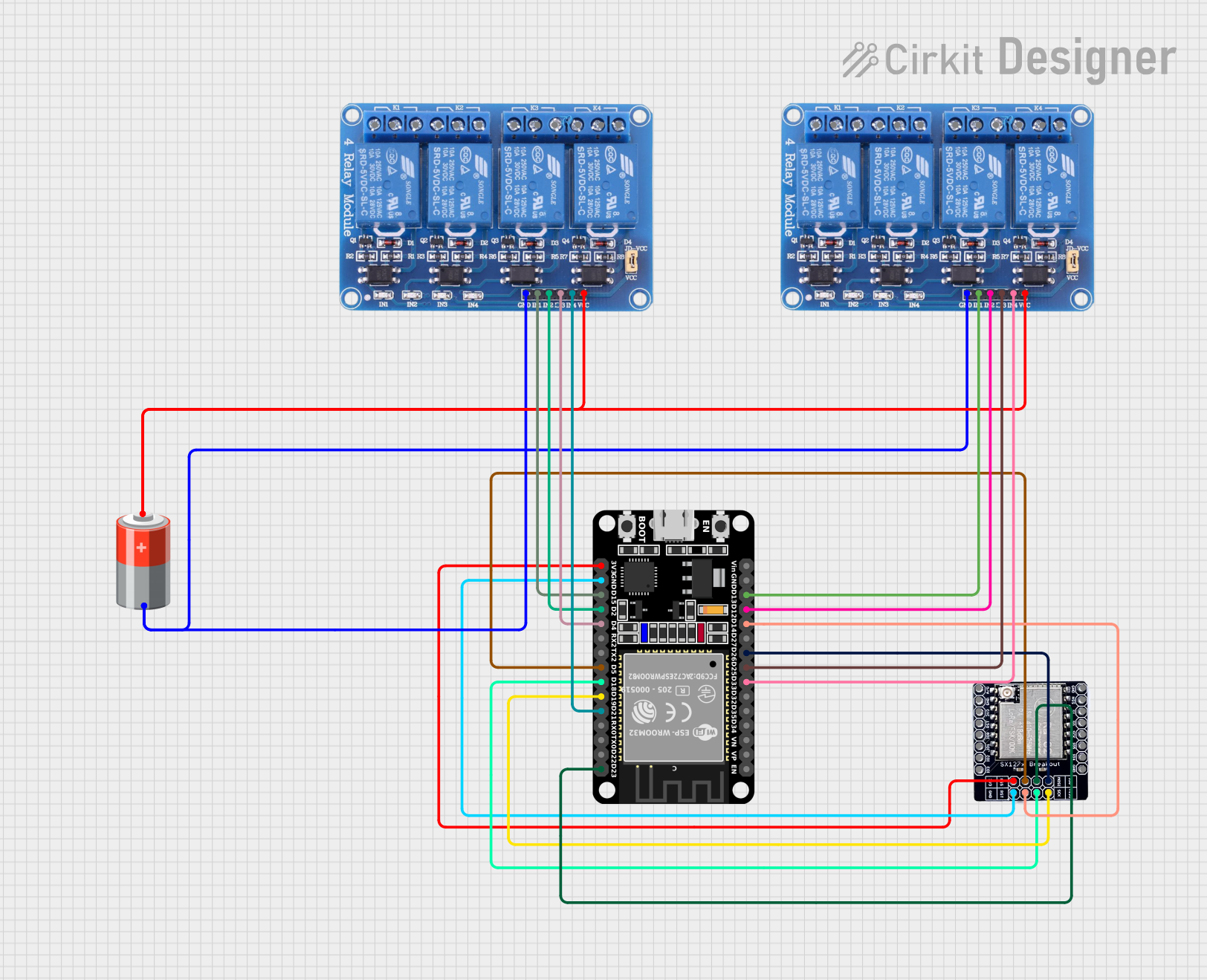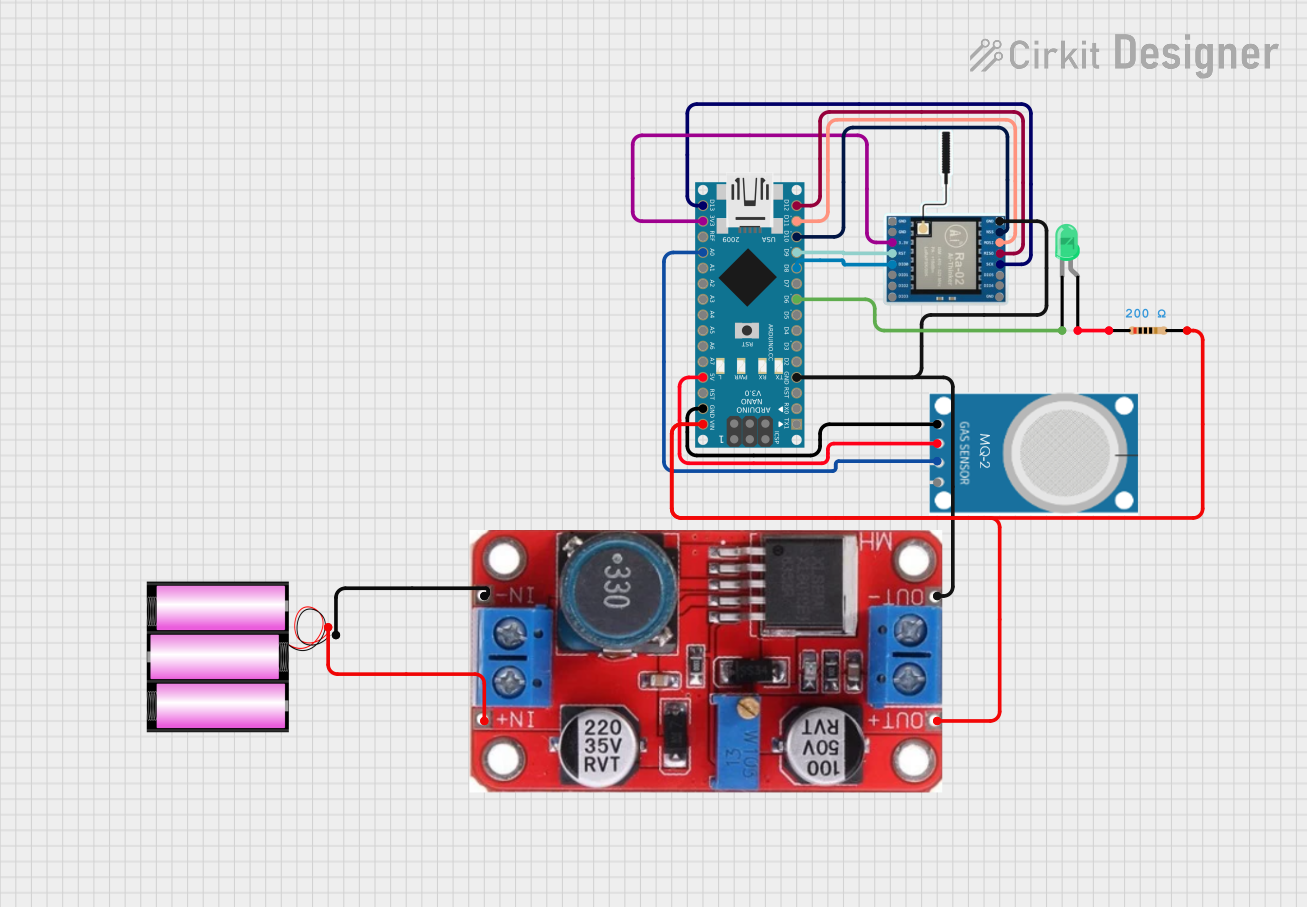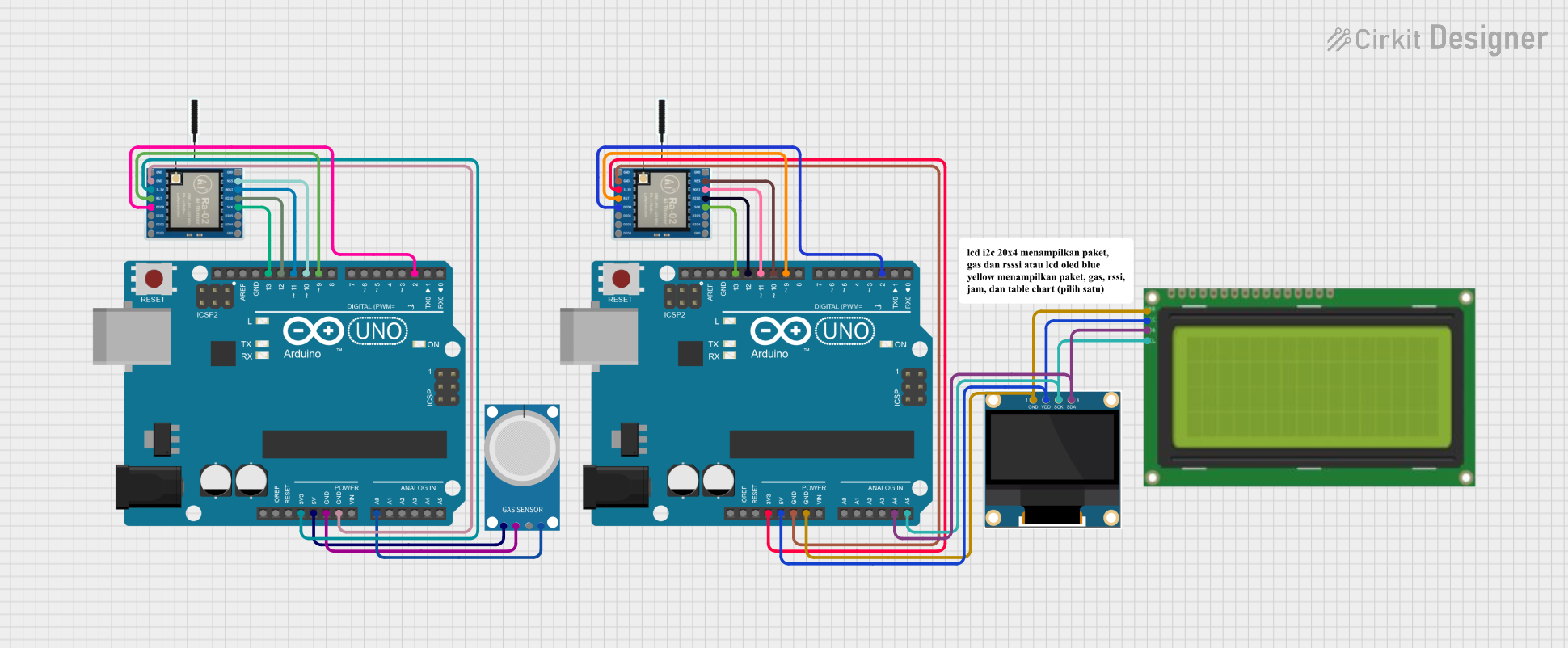
How to Use lora ra 02: Examples, Pinouts, and Specs

 Design with lora ra 02 in Cirkit Designer
Design with lora ra 02 in Cirkit DesignerIntroduction
The LoRa RA-02 is a low-power, long-range transceiver module designed for wireless communication using LoRa (Long Range) modulation technology. Manufactured by LoRa, this module is ideal for Internet of Things (IoT) applications, offering reliable communication over distances of several kilometers in open areas. The RA-02 supports various frequency bands and is optimized for low data rates, making it suitable for applications such as remote sensing, smart agriculture, industrial automation, and environmental monitoring.
Explore Projects Built with lora ra 02

 Open Project in Cirkit Designer
Open Project in Cirkit Designer
 Open Project in Cirkit Designer
Open Project in Cirkit Designer
 Open Project in Cirkit Designer
Open Project in Cirkit Designer
 Open Project in Cirkit Designer
Open Project in Cirkit DesignerExplore Projects Built with lora ra 02

 Open Project in Cirkit Designer
Open Project in Cirkit Designer
 Open Project in Cirkit Designer
Open Project in Cirkit Designer
 Open Project in Cirkit Designer
Open Project in Cirkit Designer
 Open Project in Cirkit Designer
Open Project in Cirkit DesignerCommon Applications
- Smart Agriculture: Monitoring soil moisture, weather conditions, and crop health.
- Remote Sensing: Collecting data from sensors in hard-to-reach locations.
- Industrial IoT: Machine monitoring and predictive maintenance.
- Smart Cities: Street lighting control, parking management, and waste management.
- Environmental Monitoring: Air quality, water levels, and weather stations.
Technical Specifications
Key Technical Details
| Parameter | Value |
|---|---|
| Manufacturer | LoRa |
| Part ID | RA-02 |
| Modulation Technology | LoRa (Long Range) |
| Frequency Range | 410 MHz to 525 MHz |
| Communication Range | Up to 10 km (in open areas, line of sight) |
| Data Rate | 0.3 kbps to 37.5 kbps |
| Operating Voltage | 1.8V to 3.7V |
| Operating Current | 10.8 mA (transmit mode), 10.3 mA (receive mode) |
| Sleep Current | < 1 µA |
| Output Power | Up to 20 dBm |
| Interface | SPI (Serial Peripheral Interface) |
| Operating Temperature | -40°C to +85°C |
| Dimensions | 16 mm x 16 mm x 2 mm |
Pin Configuration and Descriptions
The LoRa RA-02 module has 16 pins. Below is the pinout and description:
| Pin Number | Pin Name | Description |
|---|---|---|
| 1 | GND | Ground connection. |
| 2 | DIO0 | Digital I/O pin 0, used for interrupt signaling. |
| 3 | DIO1 | Digital I/O pin 1, used for interrupt signaling. |
| 4 | DIO2 | Digital I/O pin 2, used for interrupt signaling. |
| 5 | DIO3 | Digital I/O pin 3, used for interrupt signaling. |
| 6 | DIO4 | Digital I/O pin 4, used for interrupt signaling. |
| 7 | DIO5 | Digital I/O pin 5, used for interrupt signaling. |
| 8 | GND | Ground connection. |
| 9 | MISO | SPI Master In Slave Out (data output from the module). |
| 10 | MOSI | SPI Master Out Slave In (data input to the module). |
| 11 | SCK | SPI Clock signal. |
| 12 | NSS | SPI Chip Select (active low). |
| 13 | RESET | Reset pin (active low). |
| 14 | 3.3V | Power supply input (3.3V). |
| 15 | ANT | Antenna connection. |
| 16 | GND | Ground connection. |
Usage Instructions
How to Use the LoRa RA-02 in a Circuit
- Power Supply: Connect the
3.3Vpin to a regulated 3.3V power source and theGNDpins to ground. - SPI Interface: Connect the
MISO,MOSI,SCK, andNSSpins to the corresponding SPI pins on your microcontroller. - Antenna: Attach an appropriate antenna to the
ANTpin for optimal signal transmission and reception. - Interrupts: Use the
DIOpins for interrupt-driven communication if required by your application. - Reset: Connect the
RESETpin to a GPIO pin on your microcontroller for software-controlled resets.
Important Considerations
- Voltage Levels: Ensure the module operates within the specified voltage range (1.8V to 3.7V). Exceeding this range may damage the module.
- Antenna Selection: Use a high-quality antenna tuned to the operating frequency for maximum range and performance.
- SPI Configuration: Configure the SPI interface on your microcontroller to match the module's requirements (e.g., clock polarity and phase).
- Environmental Factors: The communication range may vary depending on obstacles, interference, and environmental conditions.
Example: Connecting LoRa RA-02 to Arduino UNO
Below is an example of how to connect the LoRa RA-02 module to an Arduino UNO and send data.
Wiring Diagram
| LoRa RA-02 Pin | Arduino UNO Pin |
|---|---|
| 3.3V | 3.3V |
| GND | GND |
| MISO | Pin 12 |
| MOSI | Pin 11 |
| SCK | Pin 13 |
| NSS | Pin 10 |
| RESET | Pin 9 |
Arduino Code Example
#include <SPI.h>
#include <LoRa.h> // Include the LoRa library
#define NSS 10 // Chip Select pin
#define RESET 9 // Reset pin
#define DIO0 2 // DIO0 pin for interrupt
void setup() {
Serial.begin(9600); // Initialize serial communication
while (!Serial);
Serial.println("Initializing LoRa module...");
// Initialize LoRa module
LoRa.setPins(NSS, RESET, DIO0);
if (!LoRa.begin(433E6)) { // Set frequency to 433 MHz
Serial.println("LoRa initialization failed!");
while (1);
}
Serial.println("LoRa initialized successfully!");
}
void loop() {
Serial.println("Sending packet...");
LoRa.beginPacket(); // Start a new packet
LoRa.print("Hello, LoRa!"); // Add data to the packet
LoRa.endPacket(); // Send the packet
delay(2000); // Wait 2 seconds before sending the next packet
}
Troubleshooting and FAQs
Common Issues
Module Not Responding:
- Cause: Incorrect wiring or power supply issues.
- Solution: Double-check all connections and ensure the module is powered with 3.3V.
Poor Communication Range:
- Cause: Low-quality or mismatched antenna.
- Solution: Use a high-quality antenna tuned to the operating frequency.
SPI Communication Fails:
- Cause: Incorrect SPI configuration or wiring.
- Solution: Verify the SPI settings (clock polarity, phase) and ensure proper connections.
High Power Consumption:
- Cause: Module not entering sleep mode.
- Solution: Implement proper power management in your code to utilize the sleep mode.
FAQs
What is the maximum range of the LoRa RA-02?
- The module can achieve up to 10 km in open areas with line of sight. However, range may vary based on environmental factors.
Can I use the LoRa RA-02 with a 5V microcontroller?
- Yes, but you must use a level shifter to convert the 5V logic levels to 3.3V to avoid damaging the module.
What frequency should I use?
- The frequency depends on your region's regulations. Common frequencies are 433 MHz, 868 MHz, and 915 MHz.
Does the module support bidirectional communication?
- Yes, the LoRa RA-02 supports both transmitting and receiving data.
This concludes the documentation for the LoRa RA-02 module.